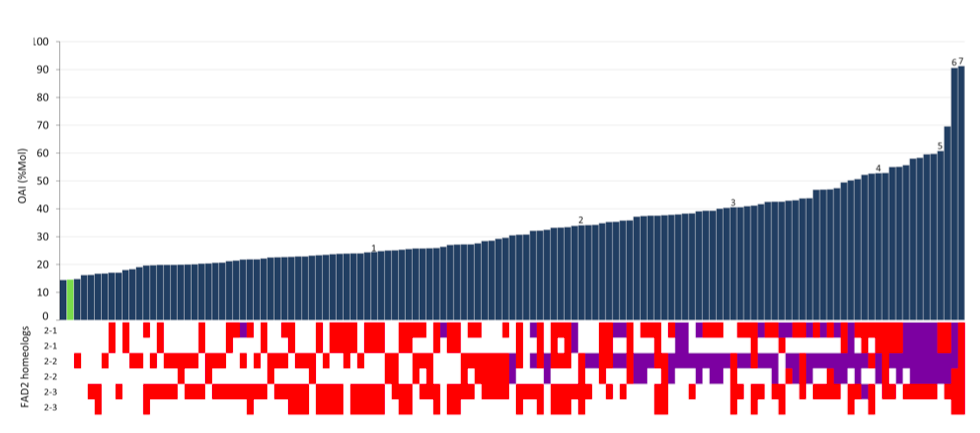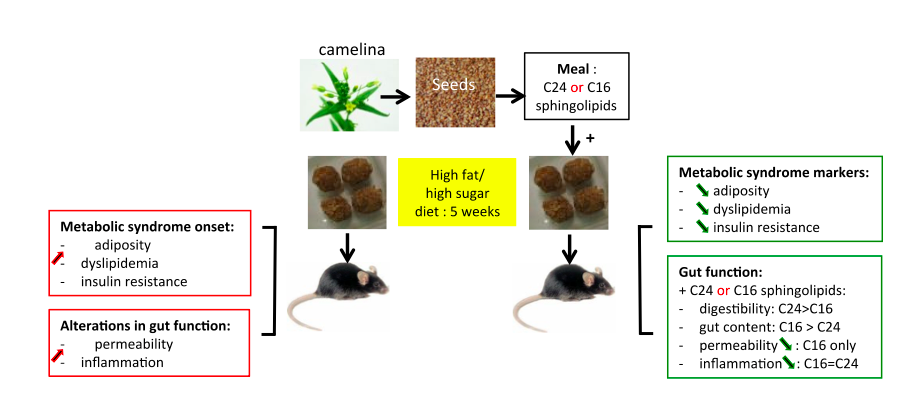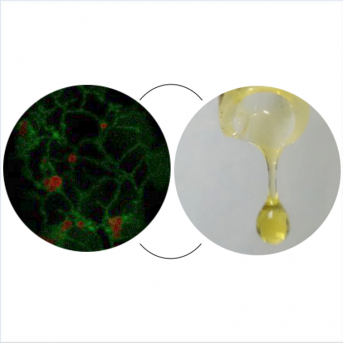Gene editing (CRISPR) in camelina
CRISPR-Cas9 editing of the 3 genes encoding delta-12-desaturase (FAD2) in Camelina sativa led to the accumulation of oleic acid in the oil with levels ranging from 10 to 62%. The different allelic combinations on the 3 homeolog genes allow for unbiased analysis of the quantitative traits associated with these genes and uniquely contribute to the creation of genetic variability for improvement of this species (Morineau, et al. 2016).

Two gene edited camelina were evaluated in field trials 2018 and 2019 at Rothamsted Research Station (UK). Multiplex editing of flowering repressor genes has resulted in early flowering camelina but also with other phenotypes such as terminal flowering or bushy habit (Bellec et al. 2022).
CRISPR-Cas9 editing of the 3 genes encoding delta-12-desaturase (FAD2) in Camelina sativa led to the accumulation of oleic acid in the oil with levels ranging from 10 to 62%. The different allelic combinations on the 3 homeolog genes allow for unbiased analysis of the quantitative traits associated with these genes and uniquely contribute to the creation of genetic variability for improvement of this species (Morineau, et al. 2016).

Two gene edited camelina were evaluated in field trials 2018 and 2019 at Rothamsted Research Station (UK). Multiplex editing of flowering repressor genes has resulted in early flowering camelina but also with other phenotypes such as terminal flowering or bushy habit (Bellec et al. 2022).
Nutritional impact of seed sphingolipids Sphingolipids are emerging as a promising class of components that may prevent the development of metabolic syndrome (MetS). The availability and intestinal effects of sphingolipids from Camelina sativa were studied in a mouse model of diet-induced metabolic syndrome (Hermier et al. 2020). Thus, sphingolipids provided in the form of camelina meals may counteract some deleterious effects of a hypercaloric diet in mice at the intestinal and systemic levels. Interestingly, these beneficial effects appear to depend in part on the acyl chain length of sphingolipids.



Leader:
Jean-Denis Faure